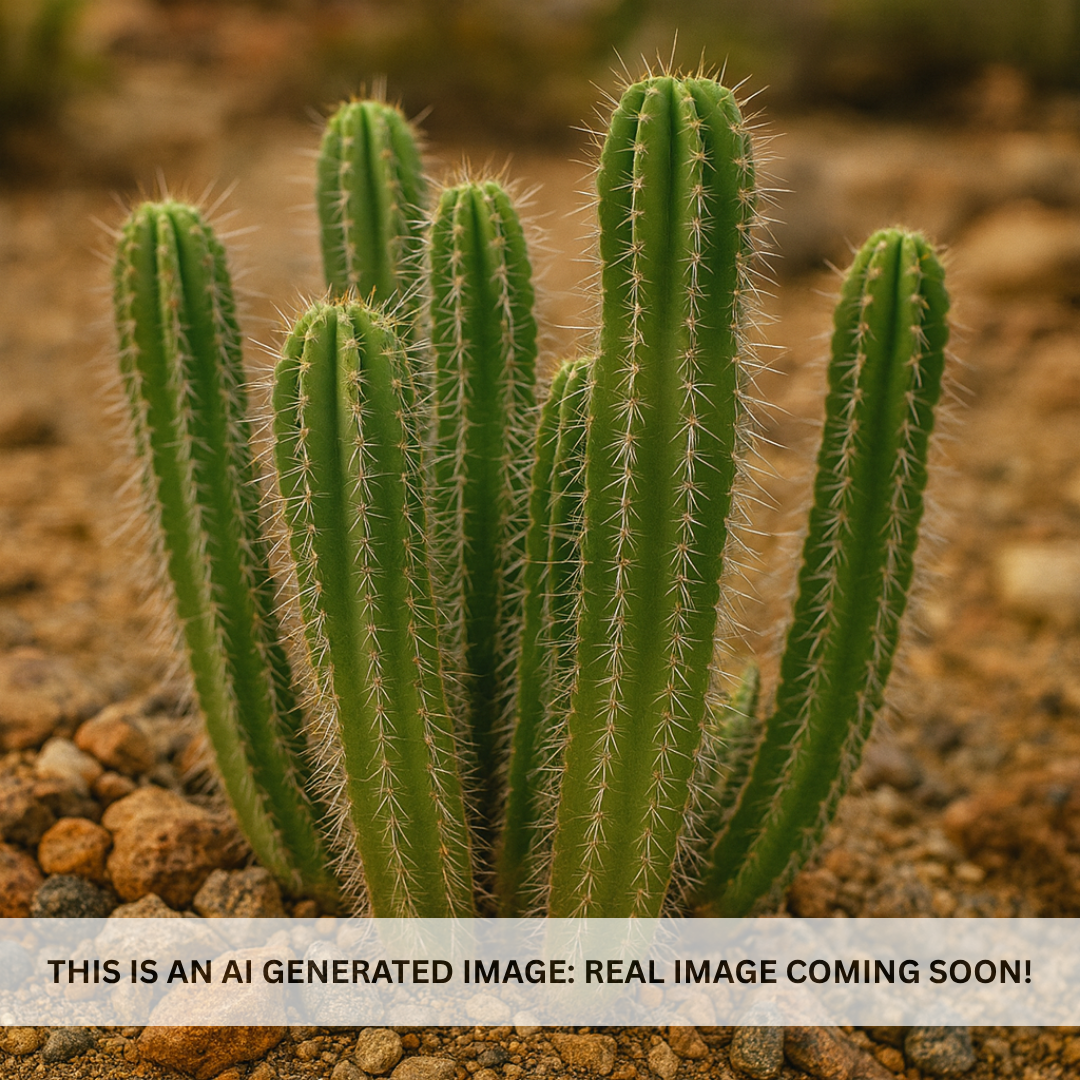My Store
Neocardinacea neocardensis
Neocardinacea neocardensis
Couldn't load pickup availability
Plant Type: perennial, columnar cactus (rare species)**
Plant Height: 6–12 feet (can reach 15 feet in maturity)**
Spread: 3–5 feet
Flower Color: white to pale yellow
Sun Exposure: Full sun
Neocardinacea neocardensis: A Rare, Architectural Columnar Cactus of Subtle Beauty and Desert Resilience
Neocardinacea neocardensis (sometimes referred to as Neobuxbaumia or Neocardenasia in older taxonomy) is a rare, columnar cactus prized by collectors and designers for its smooth vertical form, cool blue-green skin, and minimalist desert elegance. Native to arid regions of Mexico, it thrives in the intense sun and dry conditions of Arizona, where it serves as a graceful alternative to the massive saguaro or organ pipe cacti. Its upright, ribbed columns and fine, pale spines create an architectural presence that adds refinement and structure to modern or natural desert landscapes.
Key Features of Neocardinacea neocardensis
This cactus forms slender, cylindrical stems with clean, even ribbing and fine golden-to-white spines that accentuate its geometry without appearing harsh. The stems are smooth and slightly glaucous (bluish-green), often developing a subtle powdery coating that helps reflect sunlight. Mature specimens may branch from the base or remain solitary depending on growing conditions. In spring or early summer, the plant produces small, funnel-shaped white to yellowish flowers near the upper ribs, followed by round greenish fruits. Its understated elegance, combined with impressive drought tolerance, makes it a favorite among serious cactus collectors and landscape designers alike.
Growing and Care Tips
Neocardinacea neocardensis thrives in full sun and well-draining, sandy or rocky soil. In the Phoenix Valley, it performs best with full morning and midday sun, easily tolerating reflected heat once established. Plant it on a mound or slope to enhance drainage and highlight its vertical form. Water deeply but infrequently—only when the soil is completely dry. Overwatering or poorly drained soil is the most common cause of root rot. It is hardy to around 25°F, though covering is recommended during hard frosts. Growth is slow to moderate but steady, with upright columns elongating gracefully year after year. In containers, use a deep, well-draining pot with a gritty cactus mix for best results.
Landscaping Uses
The Neocardinacea neocardensis is perfect for minimalist, contemporary, and natural desert landscapes alike. Its smooth, refined columns create elegant vertical lines that complement boulders, agaves, and low-growing succulents. It’s excellent as a focal point in rock gardens, along driveways, or grouped with other columnar species for layered architectural impact. The plant pairs especially well with contrasting textures such as Golden Barrel (Echinocactus grusonii), Blue Glow Agave, or Desert Spoon (Dasylirion wheeleri). In modern landscapes, it brings balance and calm—its clean symmetry and soft blue tone act as a living sculpture under the Arizona sun.
Summary
Neocardinacea neocardensis is a rare, elegant cactus that epitomizes desert minimalism. With its slender vertical form, smooth blue-green surface, and soft spination, it provides a modern yet timeless element to Arizona gardens. Tough, drought-tolerant, and sculptural, it stands as a symbol of refined desert beauty—an ideal choice for collectors, designers, and homeowners seeking understated elegance and resilience in their landscape.
Three Timbers Installation Guide (Feel Free to Follow):
Neocardinacea neocardensis Planting Guide:
Location: Full sun; choose an open site with at least 8 hours of direct light daily. Tolerates reflected heat and thrives in exposed desert conditions.
Soil: Use a sharply draining cactus mix blended with decomposed granite, sand, or pumice. Avoid compact or organic soils that retain moisture.
Spacing: Allow 4–6 feet between plants or nearby structures to accommodate mature spread and height.
Planting Depth: Keep the root crown level with or slightly above the soil surface to prevent moisture buildup at the base.
Support: Young specimens may need light staking until roots anchor firmly; mature plants are naturally stable.
Watering Guide:
Watering After Planting: Water deeply once after installation to settle the soil. Then allow it to dry completely before watering again. During the first 3–4 months, water every 14–20 days depending on heat and drainage.
When is the Plant Established? Neocardinacea neocardensis is considered established after 9–12 months, once upright growth is firm and color deepens.
Watering Once Established: Water every 4–6 weeks during summer if no rainfall occurs. In winter, water only during prolonged dry periods.
Drip Irrigation Setup: Install one low-flow emitter (1 gallon per hour) about 12–18 inches from the base, angled outward. Run sparingly and allow soil to dry fully between cycles.
General Watering Tips: Always confirm soil dryness before watering again. Overwatering is the most common cause of root decline. A top dressing of gravel or decomposed granite enhances drainage, stabilizes temperature, and visually complements the cactus’s blue-green tone. Keep material several inches from the base for airflow and long-term health.
Share












